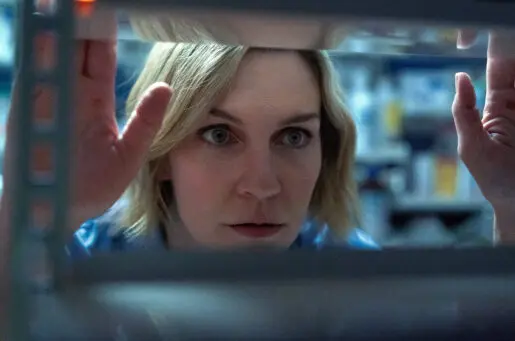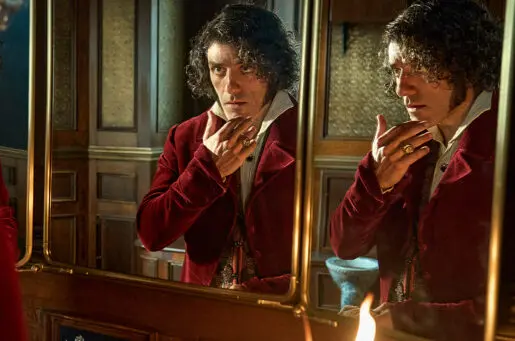Bioethics Forum Essay
Let’s Not Erase the History of Medical Ethics
I must admit that when contributing a chapter to a new book on the history of medical ethics, I was uncomfortable with what some of my coauthors believed was the only ethical way to write history: to serve social justice. That is, history not only needed to portray past injustices to vulnerable groups but also to aim toward ameliorating the modern versions of these wrongs.
But with the news that the Trump administration is planning to delete historical information that “disparages” Americans from National Park Service exhibits and the Smithsonian museums, I am rethinking my position. If there is one thing that characterizes good history, it is transparency. Even if one objects to the intense focus on acknowledging diversity, equity, and inclusion over the past several years, erasing what you may not agree with is not the answer. Our book, Do Less Harm: Ethical Questions for Health Historians, shows the virtue and importance of telling stories that conventional history has often left out.
That the book had a social justice angle was not surprising. The two coeditors, historians of medicine Courtney Thompson and Kylie Smith, as well as many of the other contributors, have for years been doing scholarship exploring the pervasiveness of racism, sexism, and ableism in the history of medicine. The Black Lives Matter movement, which accelerated after the murder of George Floyd in June 2020, led medical centers across the country to reexamine their own racist behaviors when it came to patients, research subjects, and even their own students and employees. Conversations about these and related topics energized those of us who were writing chapters.
Still, I remained uncertain that good history of medicine had to focus on these topics or, for that matter, on connecting these past abuses to similar events potentially occurring within medicine today. After all, wasn’t there a place for good history that wasn’t so overtly political—for example, telling the stories and ethical conundrums associated with famous medical figures, the discovery of specific diseases, the introduction of novel treatments, and the details of cutting-edge experiments?
But the increasing threats by the current administration to National Park Service and Smithsonian exhibitions are causing alarms throughout the world of history. In an executive order issued in March, President Trump said he seeks to challenge “narratives that portray American and Western values as inherently harmful and oppressive.” And in a recent letter to leaders at the Smithsonian, he stated that the institution should “celebrate American exceptionalism” and “remove divisive or partisan narratives.” To effect these changes, Trump has asked employees of the various sites to identify material they believe may be objectionable—and possibly removed or rewritten. What are some of the revisions being advocated?
One exhibit in Trump’s crosshairs, on the brutality of slavery, is housed at Independence National Historical Park in Philadelphia. A topic within that exhibit discusses how the 1793 Fugitive Slave Act required states to return enslaved individuals who had escaped. Similarly, concerns have been raised about an exhibit at Louisiana’s Cane River Creole National Park that describes the public whipping of escaped slaves and gives the names of the enslavers who carried out the beatings. If Trump has his way, these exhibits may be removed.
Potential changes do not only apply to issues of racism. For example, officials at Great Smoky Mountains National Park in Tennessee and North Carolina have called into question a plaque about the dangers that power plants and cars cause to plants and animals. At North Carolina’s Cape Hatteras National Seashore, an employee has raised concerns about a sign noting the danger of rising seas to wild horses.
The most worrisome thing about the potential removal of this information is its whitewashing of history. Even if one disagrees with specific claims, the best way to refute them is to provide counterarguments, not to “disappear” the contradictory statements. What’s the point of history if the parts of it that you don’t like can just be removed?
These threats to historical knowledge led me to reread many of my colleagues’ contributions to Do Less Harm. In his chapter “Centering the Margins,” historian Antoine Johnson describes much of the history of medicine as the “three D’s”: doctors, drugs, and diseases. While these topics are clearly important, focusing on them highlights the discoveries and innovations largely made by white male doctors. But who gets to say that this information is what should constitute the history of medicine? Aren’t the experiences of women and minorities, whether patients or health professionals, equally part of that history? By looking at the history of medicine through a lens of social justice, the potentially invisible stories come to light. One told by historian Ayah Nuriddin, in her chapter “Silences and Violences,” is that of National Negro Health Week, a grassroots initiative in the early 20th century that merged public health and racial justice efforts. This type of story is missing from traditional histories of medicine because, for too long, no one went looking for them.
Another largely absent topic in medical history is the treatment of psychiatric illness among Black patients. When Kylie Smith researched it, she found that psychiatrists caring for these individuals often created false dichotomies about emotional and psychological issues between Black and white patients. Such beliefs, she writes, “created and justified systems that segregated Black patients from white ones, alienated them from their families, and forced them to perform hard labor under the guise of therapy.” Perhaps this conclusion might be the sort that the Trump administration would rather not hear in its emphasis on the “grandeur of the American landscape.” But, again, excluding certain arguments from your accounts because you disagree with them prevents good history—finding facts, crafting arguments and revisiting previous scholarship—from happening.
Sometimes invisibility is right in front of our eyes. Several chapters in the book focus on museums that house medical specimens, usually “abnormal” body parts obtained decades or centuries ago for display to medical audiences as well as the general public. It took a social justice approach to history to start asking questions about these exhibits. Who were the people, so dehumanized in these displays, whose limbs and brains we now see? Is there any chance they gave consent to show their body parts? What are the ethical duties of museums that house medical specimens? Surely medical history should not only be concerned with these specimens, but also the lives of the individuals who have been partially preserved.
Finally, the most invisible group of all in medicine might be disabled people, who constitute roughly a quarter of the population. Even though such individuals are frequently under medical care, medicine has been interested in them only as examples of diseases or conditions. But who were and are these people? It is often hard to know. As historian Katrina Jirik writes in her chapter, “Disability, Archives and Museums,” “the voices of disabled people are missing from the archival record, muted, silenced by the voices of prominent actors.” Yet once you go looking for them, they are a rich part of medical history.
So, do I now think that all history must pursue social justice? I’m still not sure, but to the degree that it forces us to confront our complicated past, and to do so by finding previously unavailable information, it is a very important tool. The alternative—a sanitized version of history told with cherry-picked sources—isn’t really history at all.
Barron H. Lerner, professor of medicine and population health at the New York University Grossman School of Medicine, is the author of “The Good Doctor: A Father, A Son, and the Evolution of Medical Ethics.” He is a Hastings Center fellow. X: @barronlerner














“Who controls the present controls the past. Who controls the past controls the future.”
George Orwell’s (rephrased) warning in 1984 captures the ethical crisis Barron Lerner identifies in “Let’s Not Erase the History of Medical Ethics.” The Trump administration’s proposal to rewrite historical content from Smithsonian and National Park Service exhibits is not only a political act: it is an ethical one. The deliberate manipulation of history endangers the foundation of both medicine and law, fields that depend on precedent and transparency to preserve their integrity. As Lerner argues, good history requires confronting uncomfortable realities. Sanitized history, by contrast, is not history at all.
As Carl Schneider noted in “Bioethics in the Language of the Law,” law is built upon precedent. It evolves through accumulated experience and deliberation on past offenses. Bioethics operates similarly. Cases such as those of Mary Northern and Dax Cowart – two patients whose autonomy was violated in the name of medical “beneficence” – are not merely stories but ethical precedents. Like a patient’s own medical history, the history of medicine itself is essential to diagnosing and treating today’s ethical dilemmas. If we alter or erase that record, we invalidate the suffering that compelled us to do better.
It is tempting to believe that past abuses – the Tuskegee Syphilis Experiment, Henrietta Lacks, or the sterilization of Native American and Black women – could never recur. But ethical lapses persist daily in subtler forms: in biased research, inequitable access to care, and systemic neglect. Without historical context, we lose our diagnostic tools. How can we prevent what we no longer recall? The right to refuse treatment, the duty to obtain informed consent, and the very language of autonomy all exist because history forced medicine to confront its failures. Erasure severs that thread. It leaves future clinicians and policymakers condemned, as the saying goes, to repeat what they cannot remember.
Historical erasure also harms the people whose bodies and lives formed the bedrock of modern medical knowledge. The victims of past injustices deserve recognition not as footnotes, but as contributors (however unwilling) to the progress of medicine and bioethics. Their stories demand acknowledgment not only for moral reasons but for intellectual honesty. Diversity, equity, and inclusion are not sudden trends; they are long-overdue correctives to a record that for centuries systematically omitted the contributions of women, Black people, Indigenous communities, and disabled individuals from the narrative of discovery. To ignore them now is to participate in a second act of erasure.
True history, like good medicine, depends on context. Facts without interpretation are as misleading as symptoms without a diagnosis. Medical education that separates science from its ethical and historical roots risks producing physicians who know the mechanisms of disease but not the moral costs of their profession. The Tuskegee Experiment must be taught alongside discussions of syphilis. The story of Henrietta Lacks belongs beside lessons on cell biology. Medical schools have a duty to integrate the humanistic and historical dimensions of care in order to train clinicians who understand that healing requires humility. I am fortunate to study in a program that does this, combining clinical training with courses in ethics and the humanities. It makes me not only a more competent future physician, but a more conscious one.
Lerner is right to worry about the politicization of history. Yet the answer is not to abandon the social justice lens which fortifies history; it is to defend it as a tool for ethical clarity. In medicine and bioethics, this perspective honors the stories of marginalized groups, exposes past wrongs, and guides us in understanding them and acting responsibly today. The attempt to erase discussions of racism, sexism, and ableism under the banner of “American exceptionalism” represents not neutrality but denial. History shapes politics, but politics must not be allowed to define history. When the state dictates which stories can be told, truth itself becomes partisan.
Acknowledging wrongdoing does not weaken a profession or a nation: it strengthens them. Growth requires accountability. As a future Black physician, I hold pride in my field’s achievements while remaining aware of its complicity in the suffering of my ancestors. I can celebrate progress only because I know the cost of it. Historical erasure robs society, present and future, of that dual awareness. It replaces complexity with comfort and truth with propaganda.
The stakes extend beyond academic debate. To erase history is to endanger patients. Ethical reflection depends on memory of errors, harms, and the maturation earned through their recognition. Removing uncomfortable realities from museums, classrooms, or archives does not merely threaten good history; it threatens history itself. And when history disappears, so does the possibility of justice. And when justice vanishes from medicine, patients pay the price.